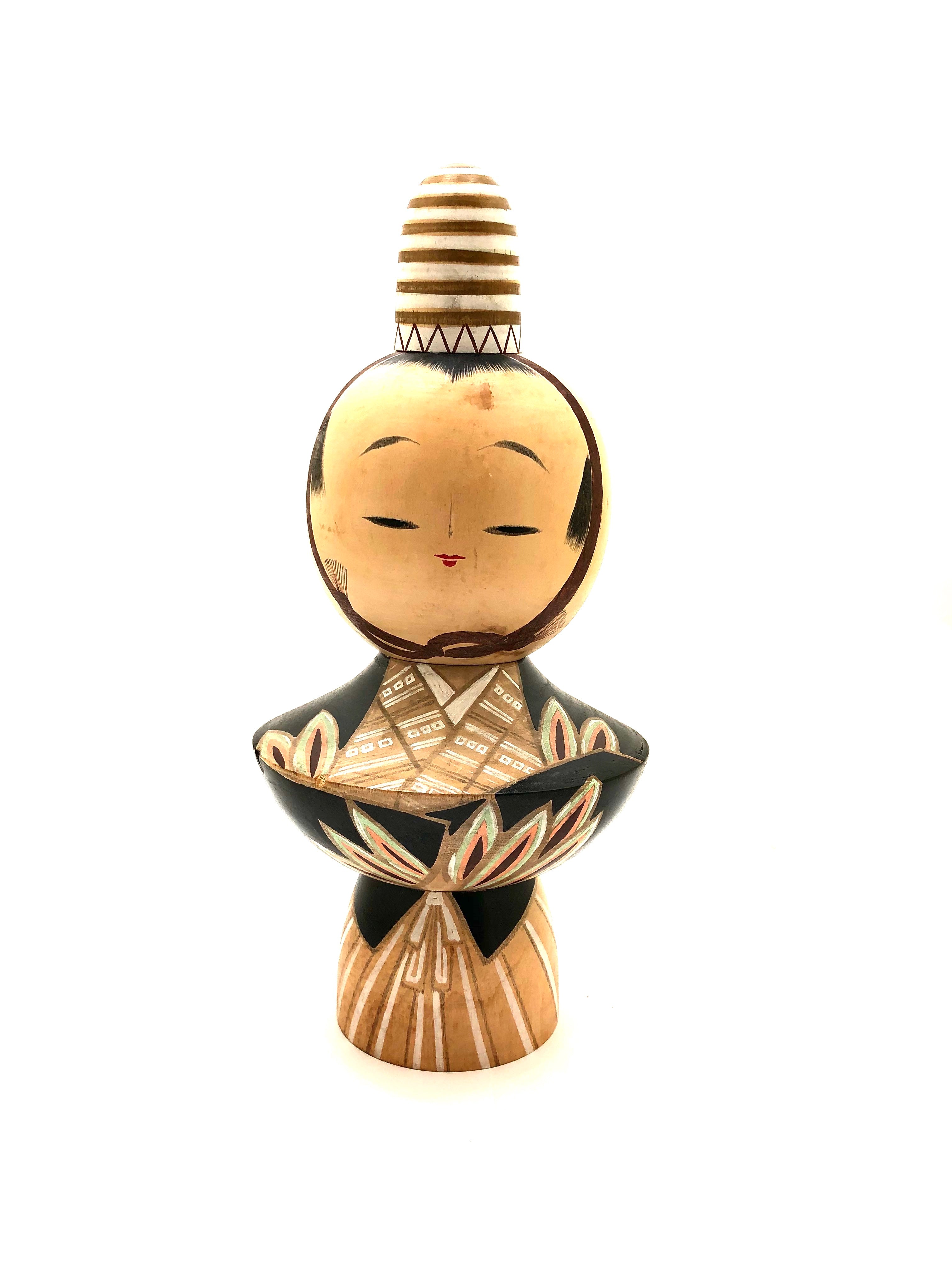



Vintage Sosaku Kokeshi Entitled: “The Boy Emperor” | Kokeshi of Historical Significance
Dimensions: 12-0”h
This extremely rare Creative Kokeshi exhibits wonderful three-dimensional form and is beautiful painting in traditional royal court dress (Sakurai Hakama jacket and trousers, ue-no-hakama), worn by both the elite and samurai during this period, and honors the customs of Bushido, (attitudes, behavior, and lifestyle). This is one of the most elaborate traditional garments used as formal attire. Also retained in this wonderful lathe-turned carving is his cone-shaped headdress, (Kammure) with fully detailed decorative ties. REFERENCE: Japanese people and craftsmen love and respect tradition as seen in museums and displayed in Masuri festivals throughout Japan. This doll was made in the early Sosaku period, the 1940s, in which this lathe-turned tradition grew and flourished in the 1950s-60s, and well into the 70s. The doll is beautifully rendered and detailed in refined colors of gold, turquoise, and salmon with white and black accents. His face is beautifully rendered with wonderful expressive red lips, suggested nose, and eyes/brows. The piece was purchased at auction in Takayama, a city known for its fine fine craftsmanship and reverence for the historic. The piece is signed on the bottom but because of its’ age and the evolution of the kanji, it is not translated.
Vintage Condition: Excellent and commensurate with age with minimal imperfections that do not interfere with its display ability. Without question a museum piece or one to be displayed in a serious Kokeshi collection. The photos support the description.
HISTORICAL NOTE: Emperor Antoku-tenno (1180-1185), 81st emperor of Japan. Before he became the monarch, his name (imina) was Tokohito-shinnō . He was the son of emperor Takakura. Antoku was named Crown Prince at around one month of age. He became emperor at one year of age. Antoku`s guardian was his grandmother,(lady Ni) When it became clear the Hekei had lost the battle of Dan-no-Ura in 1185, the boy Emperor’s grandmother resolved not to be caught by the enemy alive. " Where are you to take me?" asked the boy emperor. Blinded by tears, the child emperor recited a Buddha prayer, then prayed to the east, then to the west to say farewell to the Buddha. Lady Ni took him in her arms, and with the words: " In the depths of the ocean is our capital." They jumped together into the sea and drowned.
